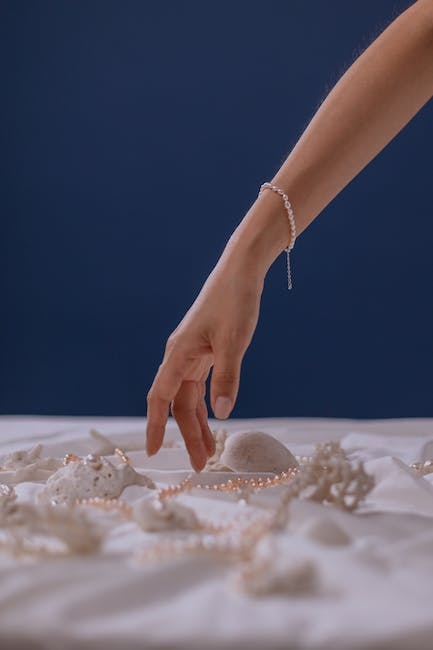Exploring the Origins and Popularity of Tapioca Pearls
Have you ever tried tapioca pearls? These small, chewy balls are a popular addition to desserts and beverages around the world, from bubble tea in Taiwan to pudding in Brazil. But where did these tiny pearls come from, and how did they become such a beloved treat?
The Roots of Tapioca Pearls
Tapioca pearls have their origins in South America, specifically in Brazil, where they were known as “sabudana” or “sagu” by the indigenous people of the region. The pearls were made from cassava root, a starchy tuber that was a staple food for these communities.
The process of making tapioca pearls was labor-intensive but simple. The cassava root was ground into a fine powder, which was then mixed with water to create a dough. This dough was then rolled into long, thin strips and cut into small, round pieces. Finally, these pieces were boiled until they became translucent and chewy, creating the tapioca pearls we know today.
From Brazil to the World
Traditionally, tapioca pearls were used in desserts and sweet drinks in Brazil. However, they eventually gained popularity in other parts of the world, particularly in Asia. In Taiwan, tapioca pearls were added to milk tea to create the popular drink known as bubble tea or boba tea. Since then, this drink has spread to other countries, becoming a global sensation.
The Many Flavors and Textures of Tapioca Pearls
Today, tapioca pearls are enjoyed all over the world and are available in a variety of flavors and textures. Some pearls are infused with fruit or tea flavors, while others are black or colored. Some pearls are larger or smaller than others, and some have a more chewy or soft texture.
Whether you prefer your tapioca pearls in a sweet dessert or a refreshing drink, there’s no doubt that these tiny balls have made a big impact on the global culinary scene. So next time you’re looking for a unique treat, why not give tapioca pearls a try?
Discovering the Delicious World of Tapioca Pearls: Boba, Black Pearls, and Bubbles
Have you ever had a refreshing cup of bubble tea or milk tea and wondered what those chewy, gummy-like balls at the bottom of your drink are? Well, wonder no more! Those delightful little treats are tapioca pearls, also known as boba, black pearls, or bubbles.
The Main Ingredient: Cassava Root
The main ingredient in tapioca pearls is cassava root, a starchy root vegetable native to South America. This versatile root vegetable is used in many dishes around the world and is a staple in many cultures.
To make tapioca pearls, cassava root is peeled, grated, and washed to remove toxins and impurities. The resulting starch is then mixed with water to form a dough. The dough is kneaded and rolled into small balls, which are then boiled in water until they become translucent and chewy.
Flavorful Additions
Sometimes, tapioca pearls are flavored with sugar, honey, or fruit extracts to add sweetness or color. This adds a delicious touch to bubble tea or milk tea, making it a tasty and refreshing treat.
While cassava root is the most common and traditional ingredient used to make tapioca pearls, other starches such as sweet potato, potato, or cornstarch can also be used.
Conclusion
Tapioca pearls are not only delicious, but they are also a unique and interesting ingredient. Next time you enjoy a cup of bubble tea or milk tea, take a moment to appreciate the tapioca pearls and the process that goes into making them. Who knows, you may even be inspired to create your own tasty tapioca pearl treats at home!
Exploring the World of Tapioca Pearls
Are you a fan of bubble tea or desserts? If so, you’ve probably encountered tapioca pearls, also known as boba. These small, chewy balls add a fun texture to drinks and desserts, and come in a variety of sizes, colors, and flavors. Let’s dive into the world of tapioca pearls and explore their unique characteristics.

Size and Color Variations
One of the fascinating aspects of tapioca pearls is the variety of sizes and colors they come in. The most common type is small, white, and translucent. These pearls are often used in bubble tea and desserts, and have a slightly sweet flavor. On the other hand, black tapioca pearls, also known as boba, are larger and have a chewy texture. They are typically used in bubble tea and have a mild, sweet flavor.
Colored tapioca pearls are also available in various shades, such as pink, green, and yellow. These pearls add a pop of color to desserts and can be fun to experiment with in different recipes. Additionally, flavored tapioca pearls are infused with different flavors such as strawberry, mango, and coconut. These pearls add an extra layer of taste to drinks and desserts.
Some tapioca pearls are made with added ingredients, such as taro or sweet potato, which give them a unique flavor and color. These pearls are less common but can be a fun addition to recipes for those looking to experiment with different flavors.
Gluten-Free Considerations
It’s important to note that not all tapioca pearls are gluten-free. Some brands may add wheat or other gluten-containing ingredients, which can be problematic for those with gluten sensitivities or allergies. Before purchasing tapioca pearls, it’s important to check the label and ensure that they are gluten-free if this is a concern for you.
Recipe Ideas
Now that we’ve explored the different types of tapioca pearls, let’s dive into some recipe ideas:
- Bubble tea: Combine tapioca pearls with tea, milk, and sweetener for a refreshing drink.
- Tapioca pudding: Cook tapioca pearls with milk, sugar, and a pinch of salt for a creamy, indulgent dessert.
- Fruit salad: Add colored tapioca pearls to a fruit salad for a fun and colorful twist.
- Iced desserts: Combine tapioca pearls with shaved ice, syrup, and fruit for a refreshing summer treat.
Overall, tapioca pearls offer a unique texture and taste to drinks and desserts. With their variety of sizes, colors, and flavors, they can be a fun addition to any recipe. Just remember to check the label for gluten-free options if needed. Happy experimenting!
The Secret to Perfectly Cooked Tapioca Pearls for Bubble Tea
If you’re a fan of bubble tea, you know that the chewy tapioca pearls are the star of the show. But have you ever wondered how they’re made and cooked? In this post, we’ll be diving into the world of tapioca pearls and sharing tips on how to cook them perfectly.
What are Tapioca Pearls?
Tapioca pearls are small, chewy balls that are the main ingredient in bubble tea, a popular Taiwanese drink. These pearls are made from cassava root starch, which is extracted and processed into small, round shapes.
Preparing Tapioca Pearls
Before cooking tapioca pearls, it’s important to rinse them in cold water to remove excess starch and debris. This will prevent them from sticking together during the cooking process. Once rinsed, the pearls should be cooked in boiling water for about 15-20 minutes, stirring occasionally. After cooking, the pearls should be drained and rinsed with cold water to stop the cooking process.
Flavoring Tapioca Pearls
To add flavor and sweetness to tapioca pearls, they can be soaked in a simple syrup or honey mixture. This will give them a sweet taste that complements the flavors of the drink they’re added to. Experiment with different flavors to find your favorite combination.
Consuming Tapioca Pearls
It’s important to note that cooked tapioca pearls should be consumed within a few hours, as they tend to harden and lose their chewiness over time. So, make sure to use them as soon as possible to enjoy their perfect texture.
Conclusion
Tapioca pearls are an essential ingredient in bubble tea, and cooking them to perfection can make or break the drink. By following these simple steps, you can ensure that your tapioca pearls are perfectly cooked, chewy, and delicious. So, the next time you make bubble tea, impress your friends and family with your tapioca pearl cooking skills.


Leave a Reply